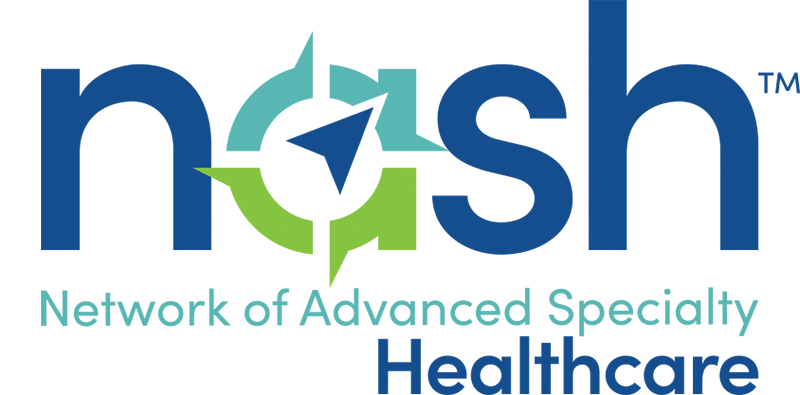By Joe Platten, CPA, NASH Director of Finance
What’s the problem?
In recent years, the specialty pharmaceutical market has experienced substantial growth, and this trend is projected to continue for the foreseeable future. Specialty medications now constitute over 50% of the net drug expenditure, nearly doubling since 2011(1). Projections across the board anticipate continued expansion, with certain forecasts showing a Compound Annual Growth Rate (CAGR) of over 10% by 2027(2) and an overall market size of nearly $1 trillion by 2030, compared to $66 billion in 2022(3).
In the meantime, the cost of these medications continues to rise dramatically. At Network of Advanced Specialty Healthcare (NASH), our overarching mission is to save money for patients and payors – as much as 50 percent for specialty medications – while upholding the highest standards of quality care.
How did we get here?
The proliferation of specialty medications can be attributed to pharmaceutical companies developing drugs with increasingly specific applications, resulting in a smaller pool of potential patients for each drug. Understandably, the cost of developing such drugs is high, leading to elevated prices. While the debate over what constitutes “fair” pricing by the manufacturer will persist, there are several other factors contributing to the relative high cost in the United States.
Key players in the healthcare ecosystem, situated at the center of a complex web involving health plans, drug manufacturers, and pharmacies, have gained significant influence(4). These stakeholders determine which drugs are included in a health plan’s formulary, enabling them to negotiate with manufacturers. The opacity surrounding these negotiations, coupled with rebates, can incentive strategies that drive up costs. These increased “gross” drug prices (referring to the list price of the drugs before factoring in any discounts or rebates) are borne by the health plans. While some rebates are passed on to health plans, an unclear amount of these rebates remain with these stakeholders. (Though it is worth noting that some organizations do pass on 100% of the rebates.) Thus, it stands to reason that higher list prices lead to higher rebates, which can lead to higher profits for these influential actors. Additionally, their negotiating power with pharmacies gives them the ability to favor certain establishments over others(5).
Nevertheless, these influential actors are not the sole contributors to the issue. Patient advocacy programs, for example, while valuable in ensuring medication adherence, can be problematic when designed to steer patients towards high-cost medications rather than considering lower-cost alternatives. Similarly, discounts (or rebates) in the manufacturer-patient relationship can result in cost disparities. Manufacturers can offer these discounts to patients as a way to significantly reduce or eliminate any out-of-pocket cost for the patient. Patients tend to opt for medications that minimize their out-of-pocket expenses, even if this places a greater financial burden on health plans.
These represent only a few of the factors that have led to a healthcare environment characterized by rapidly escalating costs.
What’s NASH doing to help?
At NASH, we exclusively partner with proven physicians, medical professionals, and other organizations who meet our stringent criteria for excellence. Every service we offer is meticulously planned to ensure a seamless experience for our patients, devoid of unpleasant surprises.
Simultaneously, our approach delivers substantial savings for all parties involved. For surgeries, the average savings typically range from 40% to 60%. When it comes to the 435+ USFDA-approved, non-generic, non-narcotic specialty drugs we handle, savings generally fall within the range of 25% to 50%. Further, we eliminate any uncertainty or hassle in the payment process by providing a single, upfront invoice to our clients.
NASH is dedicated to tackling the affordability crisis in healthcare head-on, providing a unique solution that prioritizes quality care and substantial savings. Our commitment to excellence and cost-effectiveness positions us as a leader in the field, making healthcare more accessible and affordable for all.
References
- Biggs, Scott, and Doug Long. “Insights into the 2023 U.S. Pharmaceutical Market.” IQVIA, 25 July 2023, com/locations/united-states/blogs/2023/07/insights-into-the-2023-us-pharmaceutical-market.
- “Seven Specialty Pharmacy Trends for 2023.” businesswire.com, 26 Jan. 2023, www.businesswire.com/news/home/20230126005625/en/Seven-specialty-pharmacy-trends-for-2023.
- “Global Specialty Pharmaceuticals Market Forecast Report 2023: Unveiling the Phenomenal Growth – Specialty Pharmaceuticals Market to Reach $965.54 Billion by 2030.” GlobeNewswire News Room, 12 Sept. 2023, com/news-release/2023/09/12/2741458/28124/en/Global-Specialty-Pharmaceuticals-Market-Forecast-Report-2023-Unveiling-the-Phenomenal-Growth-Specialty-Pharmaceuticals-Market-to-Reach-965-54-Billion-by-2030.html#:~:text=The%20Global%20Specialty%20Pharmaceuticals%20Market.
- “Health Policy Brief: Pharmacy Benefit Managers,” Health Affairs, 14 Sept. 2017, DOI: 10.1377/hpb2017.13. https://www.healthaffairs.org/do/10.1377/hpb20171409.000178/.
- Iskowitz, Marc. “Report: PBMs’ Business Model Has Pivoted toward Revenue from Fees and Specialty Pharmacies.” MM+M – Medical Marketing and Media, 29 Sept. 2023, mmm-online.com/home/channel/report-pbms-business-model-has-pivoted-toward-revenue-from-fees-and-specialty-pharmacies/.
